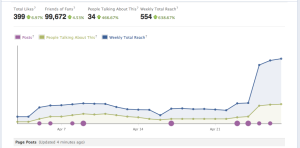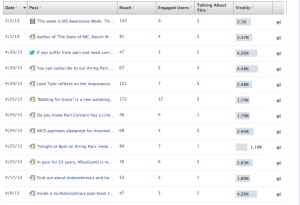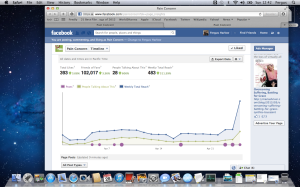These days I’m so busy I get to 20:55 and I can’t remember what I’ve done all day. Voluntary work is filling my days with a fantastic amount of learning, though I’m still struggling to get by. I’m crashing at my dads place before crashing at my brothers place, scrambling around for the qualifications I need to make something of myself in what often seems an unforgiving world. I’m engaged to a beautiful woman, working on beautiful projects, and completely powerless to help when her father dies unexpectedly, and too broke to meet the financial requirements for her visa.
On the one hand I’m enormously productive, and on the other there is always trepidation for being so. In the past I’ve wrapped myself around projects that never reach fruition. A crescendo of ideas sees me isolated and wired until I’ve approached frenzy and collapsed into a bipolar mess. It’s so difficult to tell sometimes what is illness, what is hardship, and what is genuine motivation and genuine progress. I still fear all of this, like so much before, will amount to nothing, but things are somehow different now. I think the difference is a developing network, real-life connections providing grounding.
Work continues with scheduling posts on Facebook for NP1, with the same work starting for NP2 on Saturday. In a continuing attempt to develop a presence as a resource, to build and maintain an audience, I’m scouring the internet for sources. My two main tools at the moment are WordPress and Workflowy, where I’m trying to keep all the different aspects of this work in one place.
Including sources and information relevant to the field itself, alongside the usual self-promotion, increased participation quite dramatically for NP1. Nevertheless, the self-promotional pieces had a stronger viral impact, and there is clearly a lot I need to learn about what works on Facebook and what doesn’t – what do all those figures mean? How do I determine ROI?
I’ll now see what happens to the audience over time, whether it’s a spike due to novelty or whether we’re providing something useful. I’ll then be able to see if there is any effect on number of listeners etc. Once scheduling has been completed for May and June I will continue to explore the blogosphere and see if I can create links into that.
Standard administrative duties continue, with compilation of email lists etc, and editing a 47 page basically-classified document to extract useful info. I had a brief foray into EJunkie last night, and have now been tasked with finding out what I can about selling books through I-Store.
27th April: First list of (ct) received. Converted to excel, uploaded to mail client. Confidential list also received; data extracted, converter to excel – text to columns – converter to word. Kept on stick. Deleted.
May 1st: PM request. Details of new book; all tasks related to production, finance etc.
May 4th: Additional (ct) names, finalised master list. Bracketed; sections inc. perks. Mail client upload. Complete at 219.
May 5th: New web vol.
May 6th: Ejunkie customisation. YouTube. Facebook task. 52 vs.
May 7th: Workflowy. To do list. Look at budget again; create list.





 ” for what appears to be the first reference of a tablet computer (Calculator Pad) that operates like the current tablets we know today. I wonder if this was the inspiration Jeff Hawkins (Inventor of the Palm Pilot) used in developing the GRIDPad, the first modern tablet in 1989. Yes folks, tablets were invented BEFORE smartphones.”
” for what appears to be the first reference of a tablet computer (Calculator Pad) that operates like the current tablets we know today. I wonder if this was the inspiration Jeff Hawkins (Inventor of the Palm Pilot) used in developing the GRIDPad, the first modern tablet in 1989. Yes folks, tablets were invented BEFORE smartphones.” 